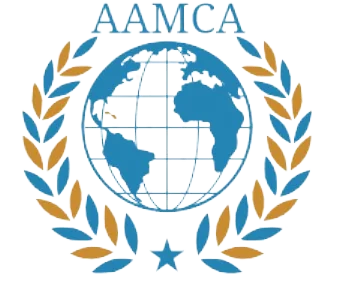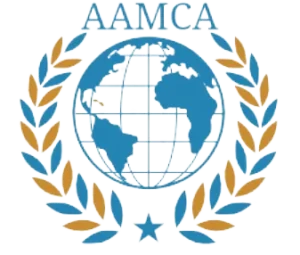Current State of Opium Production
As of 2024, Afghanistan continues to be a significant player in the global opium market, despite ongoing efforts to curb production. The latest estimates released by the United Nations Office on Drugs and Crime (UNODC) indicate that approximately 6,200 metric tons of opium were produced in Afghanistan this year. This figure represents a notable decrease from the staggering production levels observed prior to the imposition of a drug ban in 2022, which had seen output soar to approximately 8,000 metric tons.
The cultivated area for opium poppies has also seen a transformation. In 2024, opium cultivation covered around 200,000 hectares, a decline compared to the previous year’s estimates. This drop in both production and cultivation area can be attributed to several factors, including crackdown efforts by the authorities and shifting socio-economic conditions that have influenced farmers’ decisions to grow opium. It appears that some regions have experienced an increase in alternative crop cultivation, which has contributed to the reduction in opium production.
Moreover, the figures from the UNODC indicate that despite the reduction in total opium production, Afghanistan still accounts for the majority of the world’s opium supply. This reality brings to light the enduring challenges faced by the Afghan government and international agencies attempting to combat narcotics. The ongoing situation in the country suggests that while there have been progresses made in reducing cultivation, the factors driving farmers to cultivate opium remain deeply entrenched in the socio-economic fabric of Afghanistan. Therefore, the opium trade continues to present complex challenges that require a multifaceted approach to achieve lasting solutions in addressing the narcotics issue in the region.
Economic Implications for Farmers
The opium poppy has emerged as a significant economic driver for many farmers in Afghanistan, primarily due to its lucrative returns compared to traditional agricultural products such as wheat. In a country plagued by economic instability, poor infrastructure, and limited access to markets, the financial allure of opium production often overshadows the cultivation of legitimate crops. Farmers typically find that the profit margin from opium far exceeds that of other agricultural ventures, leading to a reliance on this illicit economy.
For instance, while a hectare of wheat may yield approximately $200 to $300 under ideal conditions, a hectare of opium poppy can generate upwards of $10,000 in the same period. This stark contrast in profitability compels many farmers, especially those facing economic hardships, to opt for the more rewarding yet illegal crop. Thus, for farmers, the decision is often driven by immediate economic survival rather than moral or ethical considerations regarding the impacts of opium on society.
The situation is further complicated by the lack of viable alternatives. While there have been efforts to promote alternative crops and provide incentives for farmers to shift away from poppy cultivation, the challenges remain formidable. The scarcity of resources, inadequate agricultural education, and limited access to markets for other crops hinder farmers’ ability to make a successful transition to licit agriculture. Furthermore, if economic conditions do not improve, there is a significant risk of farmers reverting to opium production as a coping mechanism during times of crisis.
In light of these factors, understanding the economic implications tied to opium production is paramount for policymakers aiming to encourage agricultural diversification. Without addressing the underlying economic challenges faced by Afghan farmers, any effort to curtail poppy cultivation may prove insufficient, leaving many farmers trapped in a cycle of poverty and dependence on an illegal economy.
Geographical Shifts in Opium Cultivation
Opium production in Afghanistan has undergone significant geographical shifts in recent years, with a noticeable movement from the traditionally dominant southwest provinces, such as Helmand and Kandahar, to northeastern regions, including Badakhshan and Takhar. This shift reflects not only changes in agricultural practices but also the impact of various socio-political factors that influence opium cultivation trends. The increased insecurity in some southwest provinces, coupled with military operations against opium farmers, has compelled many cultivators to seek safer and more fertile lands in the northeast.
The concentration of opium production is now adapting to these geographical changes. In areas like Badakhshan, farmers have taken advantage of the conducive climate and soil conditions, resulting in a significant increase in the yield of opium poppies. This expansion may lead to shifts in the regional drug trade dynamics, as northern provinces begin to increase their role in the cultivation and trafficking of opiates. Consequently, the historical patterns of opium trade routes are expected to evolve, potentially enhancing the trafficking networks through Central Asian countries.
Moreover, the involvement of UN agencies, such as the United Nations Office on Drugs and Crime (UNODC), plays a critical role in monitoring and managing these shifts in cultivation. By providing assistance to affected communities and promoting alternative livelihoods, these agencies aim to mitigate the negative impact of opium farming on local populations. Efforts include education on sustainable agriculture and programs designed to reduce dependence on opium production. However, the success of these interventions is often challenged by prevailing economic conditions and the allure of lucrative opium markets.
The geographical dynamics of opium production in Afghanistan reflect intricate interrelations between environmental factors and socio-economic conditions, underscoring the need for comprehensive strategies that address both cultivation and its implications for regional security.
Substance Abuse Treatment Landscape
The landscape of substance abuse treatment in Afghanistan presents a complex picture, particularly regarding the services available for individuals suffering from substance use disorders. As reported by the United Nations Office on Drugs and Crime (UNODC) and the United Nations Development Programme (UNDP), there are significant disparities in the accessibility of treatment services across various provinces. This uneven distribution poses a substantial challenge for effective intervention strategies aimed at addressing drug addiction, particularly for vulnerable populations such as women. In many regions, cultural stigma attached to substance use significantly limits the progress of establishing comprehensive support systems.
Currently, treatment options largely focus on traditional methods, such as detoxification and counseling; however, there is an alarming gap in the availability of evidence-based practices that can provide more effective pathways to recovery. This is further complicated by the rising demand for treatment related to synthetic drugs, notably methamphetamine, whose use has surged in recent years. The emergence of these substances into the drug landscape not only reflects a significant shift in consumption patterns but also poses additional hurdles for healthcare providers tasked with offering adequate care. The challenge is amplified by the limited resources and training opportunities available for health professionals managing these cases.
Moreover, the stigma associated with drug use and the social implications of seeking treatment can hinder individuals from accessing necessary services. Therefore, a multifaceted approach is crucial. By increasing community awareness, improving the training of healthcare providers, and enhancing the reach of treatment programs, Afghanistan can address the ever-evolving drug trends. Together, these efforts could contribute not only to better health outcomes for individuals but also to overall public health improvements in Afghanistan.




